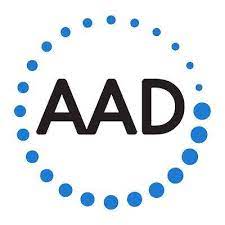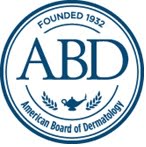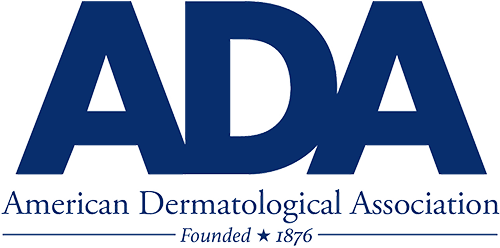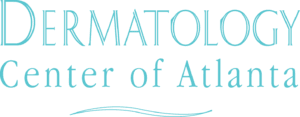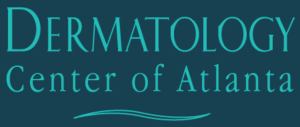Rosacea
This common skin condition can cause redness and visible blood vessels on the skin of the face.
Rosacea: Causes, Symptoms, Triggers, and Treatments
Rosacea is a common skin condition that affects millions of people in the US. It is characterized by redness of the face and can come and go periodically. Rosacea most often occurs in females with fair skin, but it can affect anyone. The condition is often mistaken for other skin problems like acne, eczema, allergy, psoriasis, or even a naturally flushed complexion.
Currently, there is no cure for rosacea, but it can be effectively managed by a trained dermatology provider, like those here at Dermatology Center of Atlanta. Continue reading to learn more about rosacea, including what causes it, what it looks like, and how it is treated.
What is rosacea? What are the symptoms?
Rosacea is a chronic (long-lasting) inflammatory condition of the skin that occurs primarily on the face, including the forehead, cheeks, nose, and chin. The symptoms come and go and can vary from person to person and change with time.
Common symptoms of rosacea include redness in the central part of the face, itching, burning, stinging, pimples or swollen red bumps that resemble acne, dryness and irritation of the eyes, and thickening of the skin of the nose, causing the nose to look enlarged and bulbous.
What is the main cause of rosacea? What triggers rosacea?
The exact cause of rosacea is unclear, but experts believe it is due to a combination of genetics and environmental factors leading to abnormalities of the vascular and immune systems.
Certain things can trigger a flare-up of rosacea, such as alcoholic beverages, especially red wine; spicy foods; hot drinks; exposure to wind or sunlight; exercise; emotional stress; cosmetic products; and some medications that cause the blood vessels to dilate (for example, certain blood pressure medicines).
The 4 Types of Rosacea
Rosacea is categorized into 4 main types based on the signs and symptoms.
- Erythematotelangiectatic rosacea is associated with erythema (redness, warmth, flushing) and telangiectasias (visible clusters of blood vessels).
- Phymatous rosacea consists of thickened skin and an enlarged, bulbous nose.
- Papulopustular rosacea is characterized by tiny pus-filled bumps called pustules accompanied by redness and swelling.
- Ocular rosacea affects the eyes, causing inflammation and swelling of the eyelids and irritation and dryness of the eyes.

Award Winning
We are an award winning dermatology practice that specializes skin.

Experience
Our expert medical providers have years of training and hands-on experience.

Integrated Care
We offer multiple dermatology providers and departments.

Entire Family
We can address dermatology concerns for the entire family at DCA.
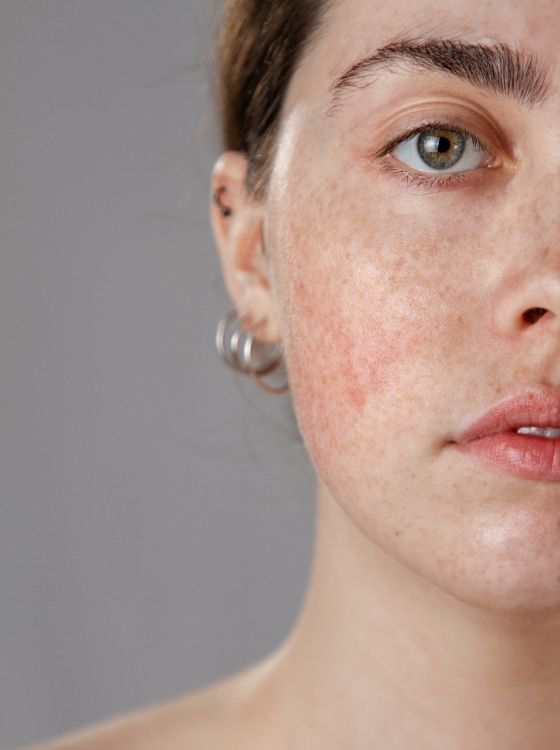
Does rosacea go away?
There is no cure for rosacea, and it does not go away. However, the signs and symptoms can flare for a few weeks or months and then go away for some time. Without treatment, rosacea can lead to complications, such as the slow buildup of tissue around the nose over several years (this is called rhinophyma and is more common in men).
How is rosacea diagnosed?
There is no specific laboratory test for rosacea. Your dermatologist will make a diagnosis based on your history and physical examination. They may run some tests to rule out other conditions like eczema, psoriasis, or lupus that can cause similar signs and symptoms.
How do you clear up rosacea?
Given that there is no cure for the condition, the treatment for rosacea is focused on controlling the symptoms. This can be achieved with skincare, prescription drugs, and therapies that reduce skin redness and enlarged blood vessels.
Medications for rosacea consist of drugs that reduce skin redness, oral antibiotics for secondary infections, and acne drugs to clear up pimple-like lesions.
Certain lifestyle changes and home remedies can also help to control the symptoms of rosacea and prevent or reduce flare-ups. This includes identifying and avoiding rosacea triggers, protecting the face with sunscreen, taking care of your skin gently, and camouflaging any remaining redness with makeup.
The appearance of the skin in people with rosacea can also be improved through light and laser therapies, which are described below.
BBL laser for rosacea
Broadband light (BBL) is a non-invasive treatment that can correct many skin imperfections from deep within the skin without damaging the skin surface. In people with rosacea, the heat from the BBL laser is used to destroy the tiny superficial blood vessels in the face that look unsightly and cause redness. A series of 3-4 BBL treatments can reduce redness, clear up rosacea, and improve the overall appearance of the skin over time. Click the button below to learn more about BBL.
Vbeam laser for rosacea
Vbeam is an FDA-approved PDL (pulsed dye laser) that uses a 595 nm wavelength laser beam to treat vascular and pigmented lesions in the skin. The dilated blood vessels present under the skin surface in patients with rosacea can be treated effectively with Vbeam.
Vbeam is a safe way to reduce or eliminate the redness and flushing associated with rosacea. The affected areas will lighten noticeably after Vbeam and may even go away completely after several treatments. Additionally, Vbeam helps to decrease rosacea-induced pimple-like lesions.
The downtime and recovery period associated with Vbeam treatments is relatively short. Most patients experience slightly increased redness and swelling for 2-4 days after the treatment. Click the button below to learn more about Vbeam laser.
Hydrafacial for rosacea
Another excellent treatment option for rosacea is called the HydraFacial. It is a patented non-invasive skin treatment that involves three steps – deep cleansing, exfoliation, and hydration. A HydraFacial can treat a range of skin conditions, including acne and wrinkles. It is also very effective in patients with rosacea. The procedure soothes the skin and targets the redness and bumps. The customized serums used during HydraFacial for rosacea are safe enough for sensitive skin.
Rosacea can be a distressing condition to live with. The unsightly bumps and skin redness can leave you feeling anxious and self-conscious about your appearance, causing you to become withdrawn, frustrated, or angry. A reputable dermatology clinic, like Dermatology Center of Atlanta, can help you control your symptoms and reduce visible redness and blood vessels in the skin with the help of medications and/or laser and light therapies or HydraFacial. Click the button below to learn more about HydraFacial.
Contact Us
our dermatology
Credentials
